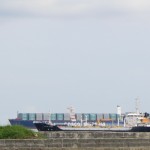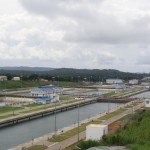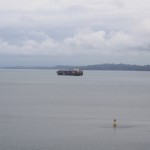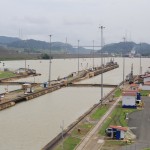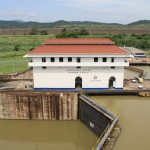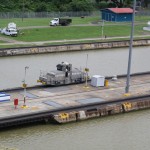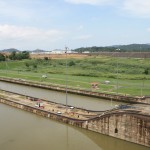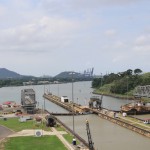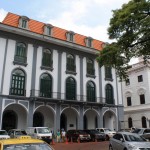I know, I know. You’ve been wondering all this time, “What about the canal, J Dot?” Well, yes, indeed there is a canal in Panama. It’s been there for some time, and the canal is a pretty inescapable fact of life in the isthmus. For one thing, it divides the country more or less in half. The vast majority of stuff — the cities, the roads, the industry — are on the eastern side.1 For years and years, this created a problem, especially for the folks on the western side. That’s being addressed slowly and by no means least of all because they’ve built several bridges across the canal. But you can easily imagine what sort of hassle it would be to deal with a huge canal right in the middle of your country.
On the other hand, imagine all of the fun you could have dealing with a canal right in the middle of your country. Everyone would want to go through it, right? Right! You’d be very popular, if not always for the right reasons.2 But let’s stick with the right reasons, shall we? Like, you are very helpful to people who want to get from China to New York without going around Argentina. Not that Argentina is a bad place, but you just don’t want to have to go there. For the last 100 years, you haven’t been forced to. Thanks Panama!
Here’s the thing about Panamanians and the canal. They run it, and they are good at it. Judging by the efficiency, profitability, and condition of the canal, the Panamanians have done a better job operating it over the last 16 years than the U.S. did in the period immediately prior to that. In addition, the U.S. talked for a long time about expanding the canal locks so that bigger ships could go through. The Panamanians actually got it done. We were in the country on the day that the first ship went through the new locks. It was a big deal, and you could sense that the whole country was proud of their accomplishment.
And rightfully so. They did a big job well. They do a big job every day, and while this work and the presence of the canal are an inescapable fact, somehow it does not seem to define who Panamanians are. Their history as a crossroads of the Americas and a focal point for interaction with Europe and Asia has significantly shaped the people of Panama, yet they are a distinct nation rather than an assortment of co-habitating clans. Being welcoming has not served to dilute their identity, but rather to become a central feature of it.
Reflecting on my time in Panama, there are plenty of things I take away. What we do can help us discover who we are, but that doesn’t mean our work is our identity. Extending hospitality is a risk worth taking, and being able to rely on the kindness of strangers is blessing. In worship, remember the Duke Ellington rule, “If it sounds good, it is good.” A sense of history is important, but not at the expense of an openness to the future. Above all else, be flexible. These might seem like too simple aphorisms, but understanding them in a theoretical sense is perhaps much easier than their practical application.
1. Ok, time out for a geography lesson. You’d think, given that Panama connects North and South America, that it runs, um, north to south. Ah ha! Fooled you! It is kind of an S shape, if the S is lying on it’s side — what Texans would call a “Lazy S.” Anyway, That means the Caribbean coast is to the north and the Pacific coast is to the south. It also means that, in certain parts of the country, you can watch the sun come up over the Pacific. Whoa!
2. Reference “The Panama Papers” for less-than-stellar-reasons to be popular.
